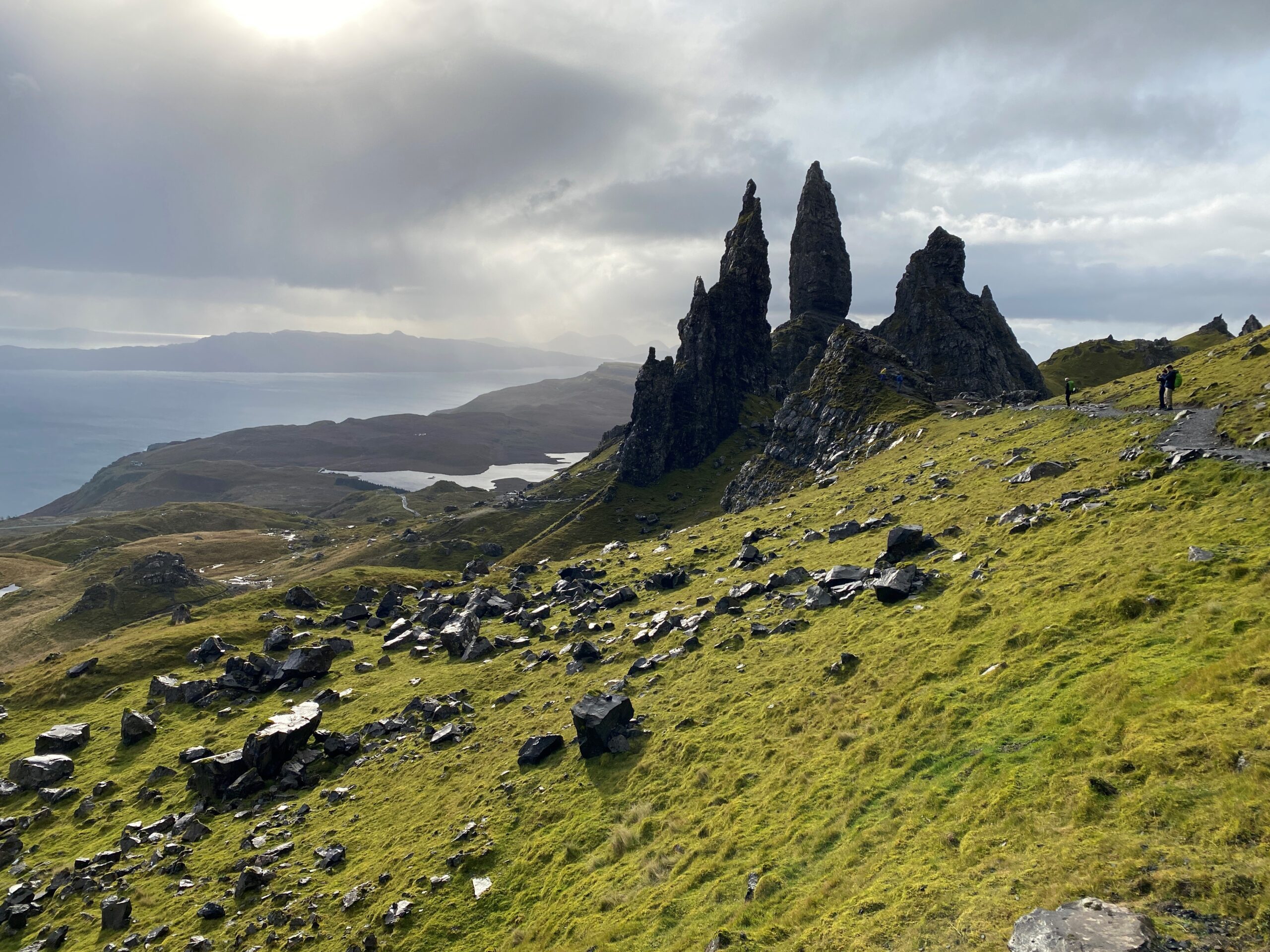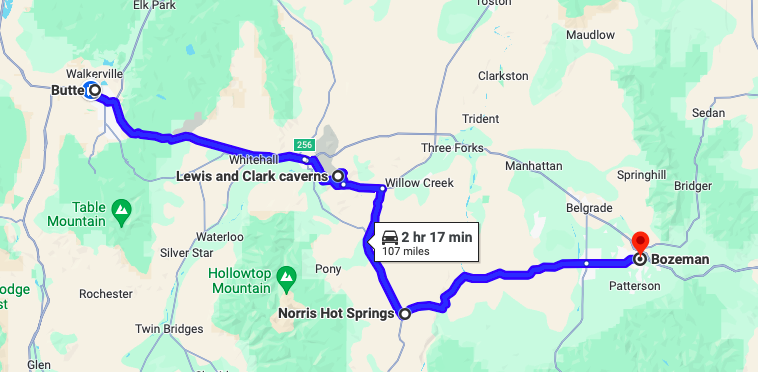Unless you have been hiding out in the mountains away from civilization, you will have heard that August 21, 2017, is the day of the Great American Eclipse. The ‘Path of Totality’ or ‘POT” starts on the Oregon Coast and stretches its way through the continental United States before exiting on the Georgia Coast. All of the states in the Path of Totality will have a prime-time view of a very cool astronomical event (weather permitting). There has been enormous hoopla in every state we have been in recently that has been on the POT (Idaho, Kansas, Missouri) so deduction tells us this event is a BDD for lots of Americans.

What it is
If you are like me, and solar systems never really interested you, then you might be feeling a little left out because you don’t really understand what all this eclipse stuff means. Have no fear, I can help you out. A few weeks ago I attended a class at the library taught by a director of a local university’s planetarium. She was nice enough to dumb down the science behind the eclipse so even I could understand it. I’m happy to share what I learned with you.
(Disclaimer, if you are really educated in this area, my explanations are probably going to drive you crazy. Forgive me if I describe things in a way that makes it easiest for me to understand. I’m sure you can find lots of articles online written by actual scientists that do a much better job.)
Orbits
The director lady began her lecture by having a little boy sit on a stool next to a table with a lamp on it. The boy’s head represented the earth, the lamp the sun, and a little styrofoam ball was the moon. As the ball orbited the head, the moon makes one revolution around the earth in ~29 days. While it is circling the earth, it spins in one circle.
Man in the Moon?
At this point in the lecture my mind was already blown. I’ve heard the term, ‘the man in the moon,’ but I never knew what it meant. Well, you’ve probably noticed that when you look at the moon there are some dark spots. If you squint your eyes and use your imagination, these spots can look roughly like a face. So, because the moon spins in one circle as it makes its one orbit of the earth, the spots are always facing the earth, and the man in the moon is always looking at you. Crazy town, right? Like I said, mind blown.
(If you can’t picture this, you might want to try it out for yourself. Put an orange on the table and draw a circular path with a cherry around it. If you cut a face in the cherry you’ll see it is always facing the orange.)

What Makes a Total Solar Eclipse?
With this first little nugget of wisdom, the director lady moved on to the eclipse. I learned my first fact: total solar eclipses happen in the same area about once every 400 years. However, eclipses are not terribly rare and if you become an eclipse chaser (yes, that’s a thing), you can see a few a year. Caveat: not all solar eclipses are total, see below. Because the Great American Eclipse is going to be a total solar eclipse, we will just talk about that kind. For a total solar eclipse to happen, four things need to take place.
Number 1:
You need to be on the side of earth that is closest to the sun. Seems basic, right? If the sun is facing India and you are in Idaho, you probably aren’t going to see much of anything. It’s gonna be dark outside.
Number 2:
It needs to be a new moon in the lunar cycle. This means the opposite of a full moon. You won’t see any part of the moon because it is between the earth and the sun. Imagine the man in the moon’s back is facing the sun. Like when you stand with your back to a campfire and your bum gets all roasty-toasty but your nose is cold; the Moon Man’s back will be warm and toasty but what’s facing the earth will be shaded.
Number 3:
This one gets a little tricky, but the moon’s orbit needs to be directly between you, on the earth, and the sun. Picture the earth, moon and sun with a straight line going through the middle of them, like a skewer on a tasty shish kebab. This doesn’t happen all of the time because the moon’s orbit pattern is a bit wonky and doesn’t just stick to the fattest part of the earth. Add that the earth does its own funky spin and you get a bit of a skewed circle, sometimes it is higher and sometimes it is lower. You get the possibility of a solar eclipse when it is lined up just right.
Number 4:
The moon needs to be closest to the earth. As you are picturing the drunken sailor routine of the moon’s orbit, now imagine it as if you were looking at the orbit from above. Instead of looking like a perfect circle, the orbit is actually a little squished so it is closer to the earth in some areas and further in some areas. Have you ever put one hand on one side of a hula hoop and the other hand on the other side and squeezed your hands together? The hoop isn’t a perfect circle anymore, it is more of an ellipse. So, in order for the solar eclipse to be total, the moon needs to be in the squished in part of the hula hoop. (Very scientific, yes, I know.)
If the moon is further away from the earth during a solar eclipse, there will be a small ring around the moon where you can still see the sun peeking around it, kind of like if you bite a peanut m&m in half, you would see the chocolate ring outside of the peanut. In a total solar eclipse, the moon appears larger than the sun so no part of the sun can peek out once it reaches totality.
What about the POT?
The sun will be hidden for different amounts of time, depending on where you are on the POT. Right smack dab in the middle of the path, the sun will be covered up for about two minutes. Just think about that: all this excitement for two measly minutes. In Idaho, we have all been taking this eclipse very seriously and have spent loads of time (way more than two minutes) planning for the event. Roads are going to be shut down, portapotties placed along the freeways, and all first responders will be ready and waiting to help if people crash their cars into each other while staring at the sky.
What Should I do to Experience a Total Solar Eclipse?
We’ve been given some tips about how to stay safe. If you want to join the throngs and see the Great American Eclipse, you might look into the following:
- Make sure you have enough food and water before the eclipse weekend, because out-of-towners are expected to flood the towns on the POT and buy everything off the shelves.
- Fill up your car with gas and maybe get a spare gas can or two.
- Throw a sleeping bag in your car, just in case you get stranded driving to or fro.
- Buy yourself some groovy eclipse glasses. Apparently,looking directly at the sun for prolonged periods of time will burn up your retina. This is not something I’m willing to burn, even just a little bit, so I will be rocking my shades.

Conclusion
I am planning on braving the POT, so you know I will have done all of these things. I sincerely hope the hype around the eclipse is just that, hype (hello, Y2K).
P.S. you’ll still might be able to see a cool eclipse even if you are outside the POT. It just won’t be total.
P.P.S. did you know there will be a Great American Eclipse 2.0 in a few years? If you miss your chance this year, you only have to wait until 2024 to see the next one streak across the U.S.
P.P.P.S. (last one, I promise) if you think my explanations are rubbish, here is a cool video that explains what the total solar eclipse is all about.





Leave a Reply